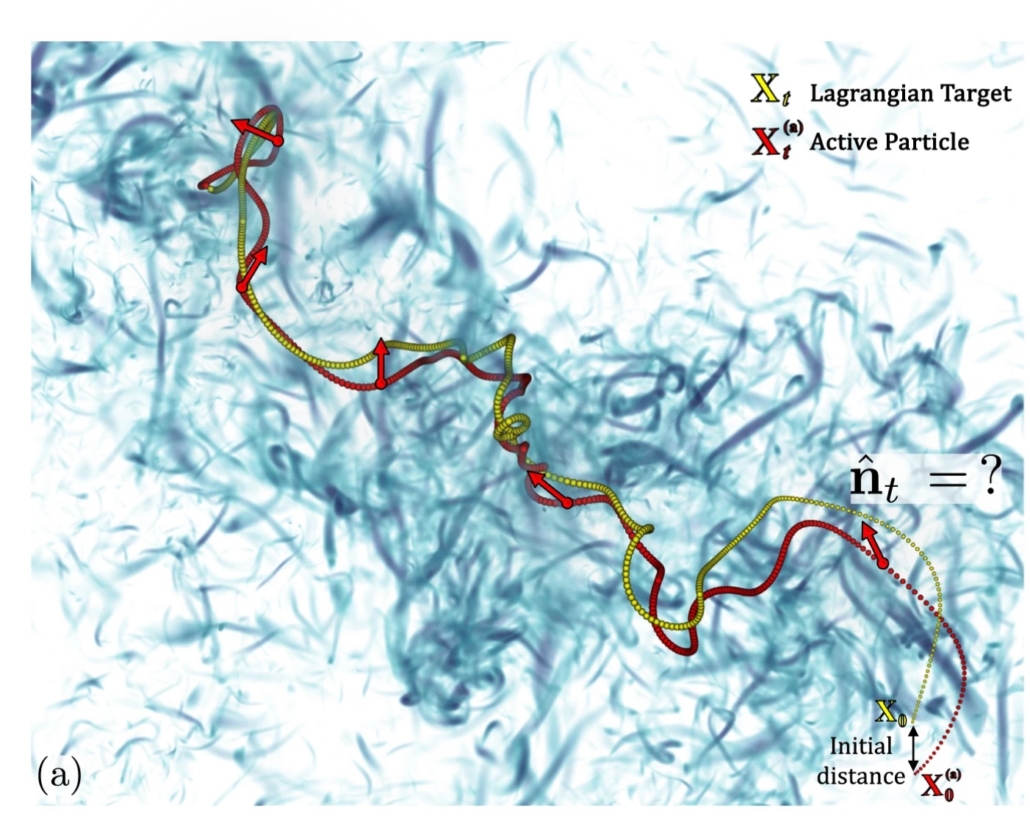Optimal tracking strategies in a turbulent flow in Communication Physics
ISC researcher, M. Cencini coauthored an interesting work recently published in Communications Physics, C. Calascibetta, L. Biferale, F. Borra, F. and M. Cencini, Optimal tracking strategies in a turbulent flow, Commun. Phys. 6, 256 (2023).
Abstract
Pursuing a drifting target in a turbulent flow is an extremely difficult task whenever the searcher has limited propulsion and maneuvering capabilities. Even in the case when the relative distance between pursuer and target stays below the turbulent dissipative scale, the chaotic nature of the trajectory of the target represents a formidable challenge. Here, we show how to successfully apply optimal control theory to find navigation strategies that overcome chaotic dispersion and allow the searcher to reach the target in a minimal time. We contrast the results of optimal control – which requires perfect observability and full knowledge of the dynamics of the environment – with heuristic algorithms that are reactive – relying on local, instantaneous information about the flow. While the latter display worse performances, optimally controlled pursuers can track the target for times much longer than the typical inverse Lyapunov exponent and are considerably more robust.

A pursuing agent (in red color) with limited maneuverability aims to stay as close as possible or, possibly, to capture a Lagrangian target (in yellow color) chaotically advected by a turbulent flow. The background is given by a rendering of the turbulent vorticity intensity at a fixed time during the episode.


